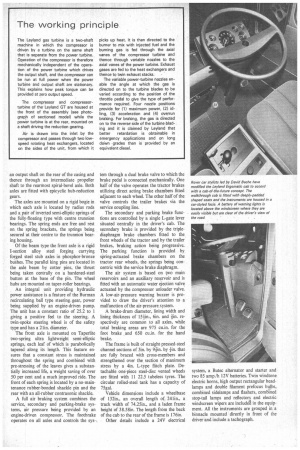The working principle
Page 103

If you've noticed an error in this article please click here to report it so we can fix it.
The Leyland gas turbine is a two-shaft machine in which the compressor is driven by a turbine on the same shaft that is separate from the power turbine.. Operation of the compressor is therefore mechanically independent of the operation of the power turbine which drives the output shaft, and the compressor can be run at full power when the power turbine and output shaft are stationary. This explains how peak torque can be provided at zero output speed.
The compressor and compressorturbine of the Leyland GT are housed at the front of the assembly (see photograph of sectioned model) while the power turbine is at the rear, mounted on a shaft driving the reduction gearing.
Air is drawn into the inlet by the compressor and passes through two lowspeed rotating heat exchangers, located on the sides of the unit, from which it picks up heat. it is then directed to the burner to mix with injected fuel and the burning gas is fed through the axial vanes of the compressor turbine and thence through variable nozzles to the axial vanes of the power turbine. Exhaust gases are fed to the heat exchangers and thence to twin exhaust stacks.
The variable power-turbine nozzles enable the angle at which the gas is directed on to the turbine blades to be varied according to the position of the throttle pedal to give the type of performance required. Four nozzle positions provide for (1) maximum power, (2) idling, (3) acceleration and (4} overrun braking. For braking, the gas is directed on to the reverse side of the turbine bled-. ing and it is claimed by Leyland that better retardation is obtainable in emergency applications and on long down grades than is provided by an equivalent diesel.


















































































































































































































































































































































































